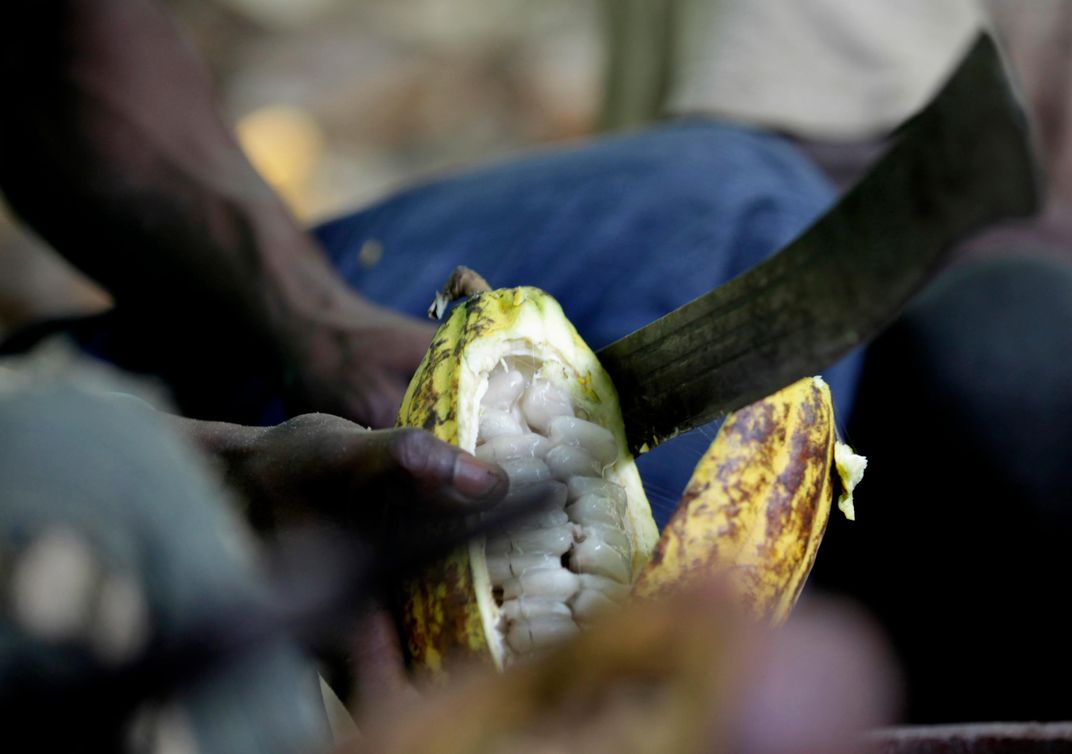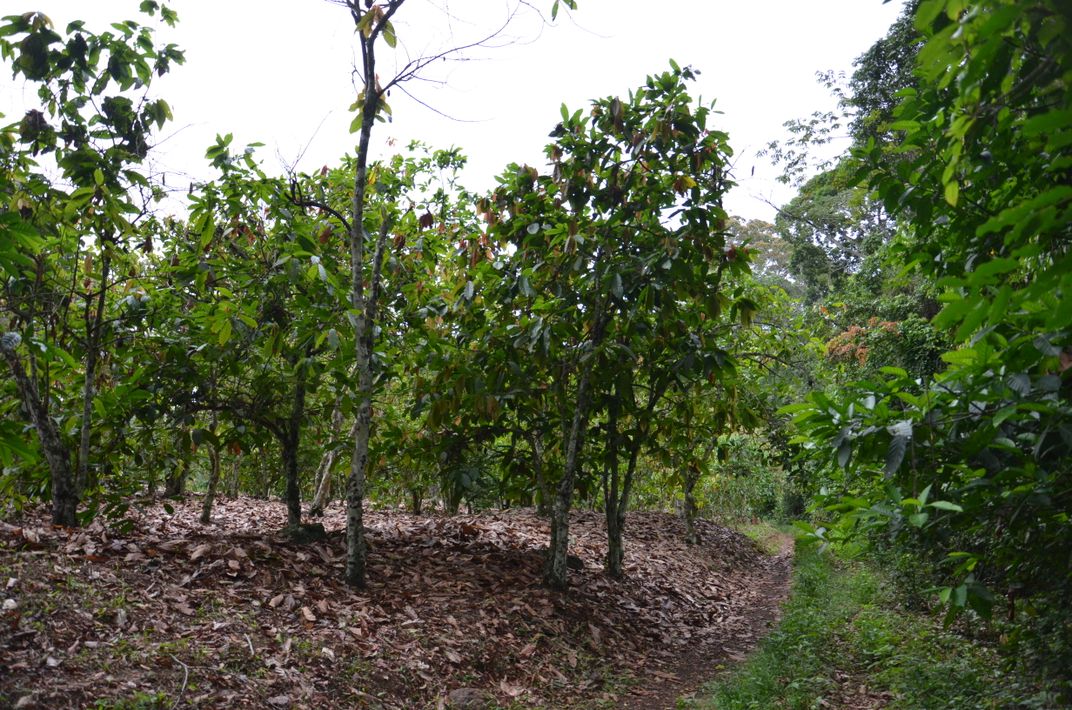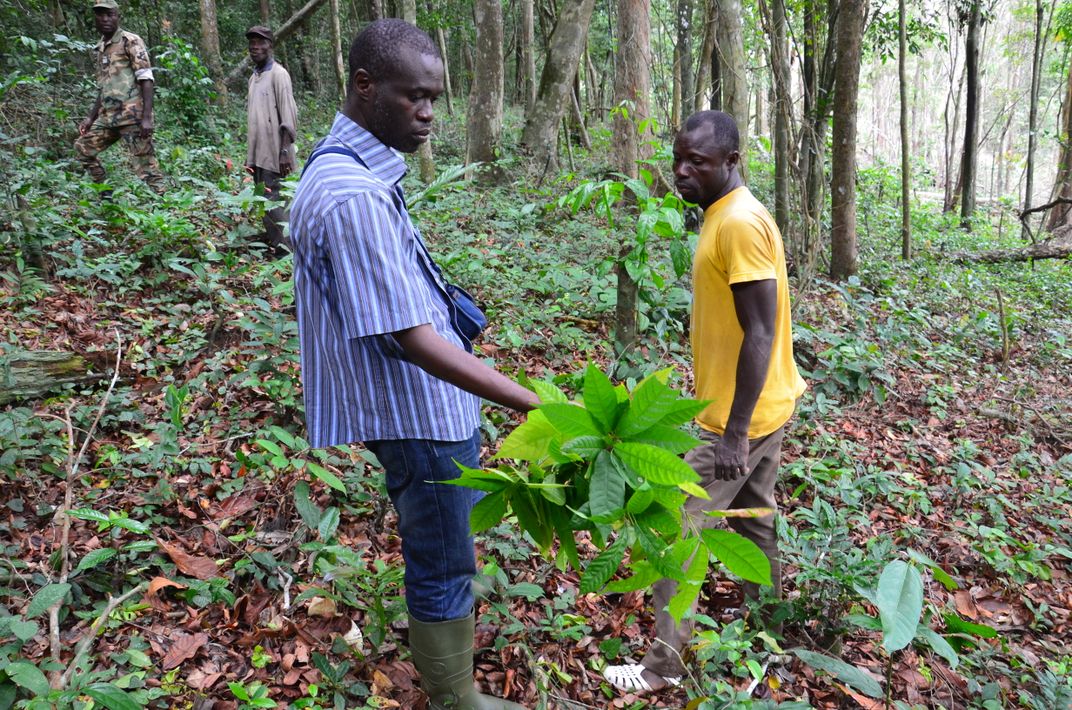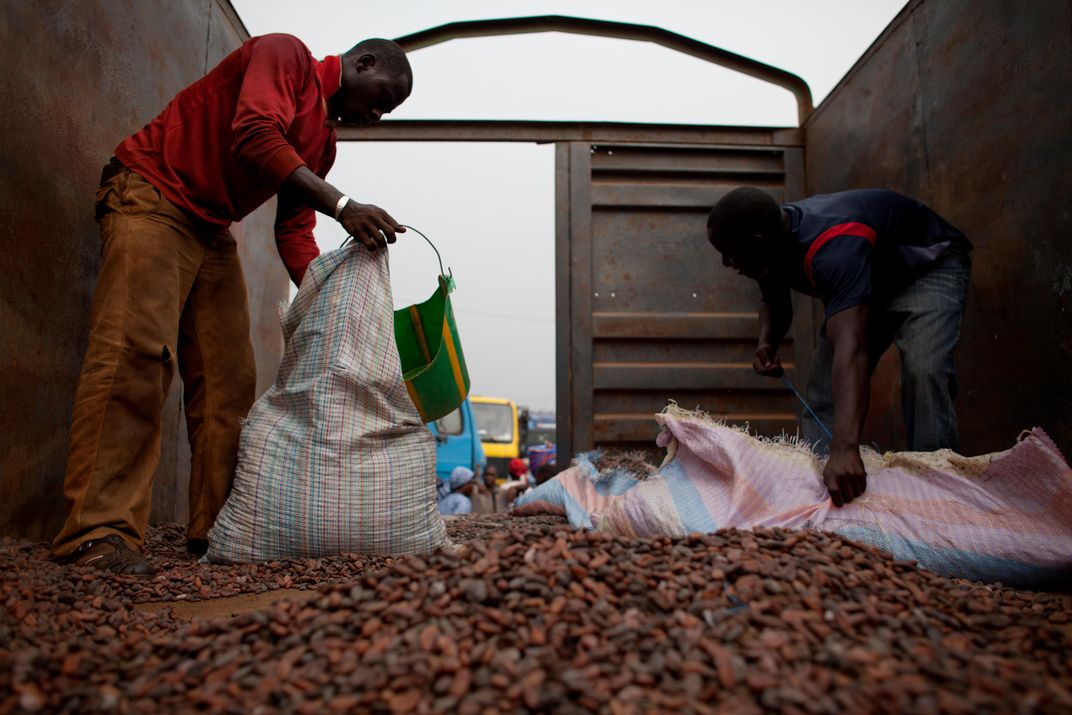Illegal Cocoa Farms Are Driving Out Primates In Ivory Coast
Thirteen national parks and reserves have lost all their primates as people move in to protected regions to farm cacao
/https://tf-cmsv2-smithsonianmag-media.s3.amazonaws.com/filer/0e/dd/0edd8b80-0cea-48fd-b7f6-097eba77cb58/42-44100628.jpg)
Thirteen of 23 national parks and forest reserves in Ivory Coast have lost all of their primate species—and global hunger for chocolate is partly to blame. A recent survey reveals that illegal cacao farms have taken over space that should be protected but has been left vulnerable due to decades of turmoil in the region.
In 2010, Scott McGraw of Ohio State University and his colleagues in Ivory Coast, also known as Côte d’Ivoire, set out on a search through the country’s national parks for two species of rare primates considered to be high conservation priorities—the roloway monkey and the white-naped mangabey. Over the next several years, the researchers spent a total of more than 200 days walking transects through five national parks and 18 forest reserves searching for signs of those and other primate species. They also recorded signs of poaching, human occupation and land use.
The team came across human settlements of as many as 30,000 people and lots of illegal cacao farms. In seven of the protected areas, all of the land had been converted to agriculture, and 80 to 100 percent of that was for growing cacao. Cacao is a major agricultural product in Ivory Coast and growing the plants brings cash. Most of the other species of plants grown within the protected areas were subsistence species, such as bananas, yams, maize and rice.
The land conversion had consequences for primates—five protected areas had lost half their primate species and 13 had lost all of them. The team never found any king colubus, a monkey species they had expected to see. Also missing were any signs of the Miss Waldron’s red colubus, a species that once lived in the region and is now probably extinct in the wild, the scientists conclude.
“Little primary forest exists in south-central Côte d’Ivoire, even within protected areas, and that which remains is at risk of being replaced by agricultural plots,” the researchers note in the March edition of Tropical Conservation Science. “When our surveys revealed the scale of cocoa farming, we were disappointed but not entirely surprised to find that primates were absent” in so many protected areas.
Ivory Coast was a prosperous country following independence in 1960, but the death of the nation’s long-time president in 1993 sparked unrest and civil war. Hundreds of thousands of people from neighboring Mali and Burkino Faso moved into Ivory Coast during this time, and many settled in forest reserves and national parks, which had been left unprotected. Those migrants planted cacao farms and hunted the local wildlife, including primates, for food.
“The absence of primates in the protected areas we surveyed is almost certainly due to use of full-sun cocoa farming, which involves removal of all trees,” the researchers write. “Obviously, complete deforestation would constitute a death knell for most primate taxa.”
The illegal farms in the region are an extreme example of the loss of biodiversity that has occurred worldwide due to land conversion. Humans have modified roughly half of the world’s land surface for purposes such as agriculture, roads and cities. A study published today in Nature finds that those changes have led to a 13.6-percent decline in the number of plant and animal species worldwide in the last 500 years. There are now approximately 10.7 percent fewer individual plants and animals than would exist in the absence of human intervention.
Biodiversity could fall another 3.4 percent if nothing is done to prevent species loss, projects the team, led by Tim Newbold of the United Nations Environment Programme World Conservation Monitoring Centre. However, the scientists write, “with concerted action and the right societal choices, global sustainability of local biodiversity may be an achievable goal.”
The Ivory Coast team agrees. They point out that cacao farming can be done through shaded agroforestry, a technique that does not remove all the native trees on a farm. It provides better revenues for farmers, preserves habitat for animals, promotes soil and nutrient retention and—best of all—produces better tasting chocolate. “Cocoa production and biodiversity,” they write, “are not mutually exclusive entities.”
/https://tf-cmsv2-smithsonianmag-media.s3.amazonaws.com/accounts/headshot/Sarah-Zielinski-240.jpg)




/https://tf-cmsv2-smithsonianmag-media.s3.amazonaws.com/accounts/headshot/Sarah-Zielinski-240.jpg)